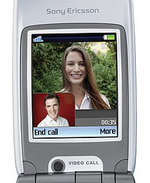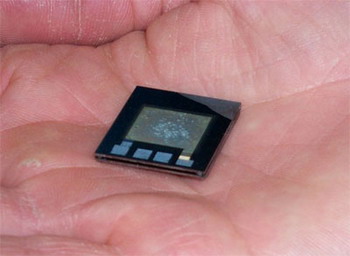New Fuel Cell to Power up 3G mobile Phones
16 December 2005 by axxxr PolyFuel,a world leader in the development of fuel cell membranes,announced an important advance in portable fuel cell technology that has brought the widespread use of “power hungry" mobile applications much closer.
The advance, an improved fuel cell membrane, significantly increases the power availability for the micro-power class of fuel cells being readied across Japan and Asia for use in new 3G cell phones, notebook PCs, and other portable multimedia applications, particularly those that feature handheld, mobile video. Even the most advanced battery technologies available today are failing to adequately meet emerging portable power needs as increasing numbers of consumers prepare, for example, to watch full-length movies or broadcast TV on their cell phones. The growing power shortfall, called the “run time gap", is particularly evident in countries like Japan and Korea where a majority of consumers commute on public transportation – often an hour or more per day – and who find the opportunity to stay in touch, be informed or be entertained by their handheld devices during such times simply irresistible. Accordingly, what is approaching a stampede to increasingly full-featured portable devices in these markets is simply accelerating the power gap.For example, in Japan, where like Korea terrestrial TV broadcasts to cell phones are already available in major cities, surveys report that nearly 90% of consumers worry about battery run-down on their devices, and 67% have already experienced it one or more times. “With all of the sizzle of new portable applications, such as downloading feature films to a mobile phone, or watching the news, the cold reality of ‘where will the power come from?’ is being completely under-reported," says Jim Balcom, president and CEO of PolyFuel. “The truth is that, according to our customers, a consumer’s daily mobile power requirements in 2007 will be at least four times what the best-available batteries can deliver today, and 2-1/2 times greater than experts believe batteries will ever deliver. As a mature technology, batteries are essentially tapped out." Because of the run time gap, original equipment manufacturers (OEMs), battery manufacturers, and others have been intently focused on readying small form factor fuel cells to augment batteries in upcoming devices. Such fuel cells, which use refillable or replaceable cartridges of methanol fuel, are on the verge of delivering the necessary continuous power levels that video – and wireless-intensive applications in particular require. They will offer essentially continuous run times as replacement cartridges or refills are easily carried in briefcase, pocket or purse. PolyFuel’s new fuel cell membrane, which provides an immediate 33% improvement in power density for methanol fuel cells over the previous best available technology, now puts micro-power fuel cells “in the zone" in terms of power for a given size, weight, or quantity of fuel, according to Balcom. The Run Time Gap While new, fully recharged lithium-ion batteries in today’s new analog TV-capable cell phones can deliver continuous TV run times for a maximum of 60 minutes, according to published specifications from their makers. Run time specs on digital TV-equipped phones – which PolyFuel’s customers believe are a future “killer app" – are reported to be somewhat better, but still problematic. Cell phone maker Samsung, at a recent industry seminar, confirmed that the functional energy requirements of 4G phones will be four times the state of the art. NanoMarkets, LC, in a September, 2005 report, predicted that in 2007, 4G phones, which run high-speed multimedia applications, will be able to have less than 30 minutes of talk time using contemporary batteries, and reiterated that today’s 3G cell phones in some parts of Asia are already limited to 60 minutes talk time. Moreover, they concluded that lithium batteries cannot be safely advanced much further, “…with perhaps only a potential for a 50% improvement in battery energy density possible hereafter." “Most of the major consumer electronics manufacturers are looking to fuel cells to bridge the run time gap," said Balcom. Fuel cells produce electricity by encouraging hydrogen atoms in the fuel to temporarily give up their electrons, leaving behind “naked", positively-charged protons. A catalyst-coated semi-porous membrane, resembling a stiff sheet of cellophane, draws these protons out of the fuel solution and conducts them through to the opposite side of the membrane. Unlike the protons, the electrons cannot pass through the precisely-engineered membrane. Instead, they go around it, in the form of an electric current, through the device being powered, and then by wire back to the opposite side of the fuel cell. There, the electrons recombine with the protons and ambient oxygen to create pure water and carbon dioxide, the fuel cell’s only waste products. The sophistication of the nano-engineered membrane makes it all happen, and for this reason it is called “the heart of the fuel cell." Virtually every large electronics manufacturer, most battery manufacturers, and companies with fuel cartridge and distribution experience such as BiC have aggressive, well-funded portable fuel cell development programs. PolyFuel is actively working with the majority of the leaders among these groups to advance the state of the art. The ICAO (International Civil Aviation Organization) voted recently to allow passengers to carry and use micro fuel cells and methanol cartridges in aircraft cabins. “This is a critical, non-technical advance towards the commercialization of portable fuel cells," said Balcom. “The rest is up to key component suppliers like PolyFuel and its customers, and today’s announcement is a real boost." www.polyfuel.com
|












 RSS feed
RSS feed